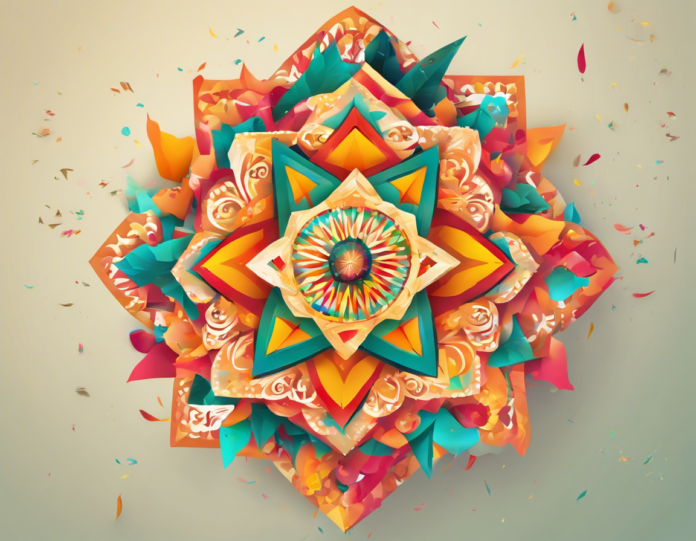Makar Sankranti, also known as Maghi, is a Hindu festival celebrated in India and Nepal in January every year. It marks the transition of the sun into the zodiac sign of Capricorn (Makar). The festival is observed with different names and rituals in various parts of the Indian subcontinent such as Pongal in Tamil Nadu, Lohri in Punjab, Bihu in Assam, and Makara Sankramana in Karnataka. Makar Sankranti holds a special significance both culturally and astronomically, and its celebration varies regionally.
History and Significance
Makar Sankranti has deep-rooted mythological and astronomical significance. According to Hindu mythology, it is believed that on this day Lord Surya (Sun God) visits his son Shani (Saturn), who is Lord of Capricorn. The festival symbolizes the end of winter and the onset of longer days. Makar Sankranti also marks the harvest season and is considered propitious for beginning new ventures and agriculture activities.
Traditions and Customs
-
Kite Flying: In states like Gujarat and Rajasthan, kite flying is a popular tradition on Makar Sankranti. The sky gets filled with colorful kites, and people engage in friendly competitions.
-
Bathing in Holy Rivers: Devotees take a dip in sacred rivers like Ganga, Yamuna, Godavari, and Cauvery to cleanse themselves of sins and seek blessings.
-
Pongal Preparation: In Tamil Nadu, a special dish called Pongal is prepared using freshly harvested rice, lentils, jaggery, and milk. It is offered to the Sun God before consumption.
-
Bonfires: Lohri, celebrated in Punjab, involves lighting bonfires, singing and dancing around it, and offering peanuts, popcorn, and rewri to the fire.
Makar Sankranti 2024 Celebrations
Makar Sankranti in 2024 falls on the 14th of January, which is a Saturday. People start the day by taking a holy dip in rivers like Ganga, Yamuna, and Godavari. It is believed that taking a dip during this auspicious period washes away sins and promotes spiritual growth. Devotees offer prayers to the Sun God and perform rituals to seek blessings for prosperity and well-being.
Regional Celebrations
-
Uttarayan in Gujarat: The International Kite Festival is a major highlight in Gujarat during Makar Sankranti. People from all over the world participate in this colorful event.
-
Pongal in Tamil Nadu: The festival lasts for four days, during which people celebrate by decorating their houses, drawing intricate kolams, and cooking delicious Pongal dishes.
-
Lohri in Punjab: Bonfires are lit, and people throw popcorn, sesame seeds, jaggery, and rewaris into the fire. Traditional Bhangra and Gidda dances are performed to the beats of dhol.
Makar Sankranti Food Delicacies
Makar Sankranti is synonymous with delicious food preparations across regions. From til (sesame) sweets to gur (jaggery) delicacies, every region has its unique culinary delights during this festival.
-
Tilgul: Maharashtra celebrates Makar Sankranti by sharing Tilgul ladoos and saying, “Tilgul ghya, god god bola” which means “Accept this Tilgul and speak sweetly”.
-
Gulpoli: In Karnataka, people relish Gulpoli, a sweet roti made of sesame seeds, jaggery, and coconut on this auspicious day.
-
Pitha: Assam celebrates Bihu with various types of Pithas, which are rice cakes filled with coconut, sesame seeds, and jaggery.
How to Celebrate?
1. Offer Prayers: Start the day by offering prayers to the Sun God and seeking his blessings for a prosperous year ahead.
2. Share Sweets: Share traditional sweets like Tilgul, Pongal, and Rewari with friends and family members to spread joy.
3. Fly Kites: If you are in regions where kite flying is a tradition, participate in kite flying competitions and enjoy the festive spirit.
4. Cook Special Dishes: Prepare traditional dishes like Pongal, Til Ke Laddoo, Khichdi, and Kheer at home to celebrate the festival.
5. Charity: Makar Sankranti is also a time for giving back. Consider donating clothes, food, or money to those in need.
Frequently Asked Questions (FAQs)
1. What is the significance of Makar Sankranti?
Answer: Makar Sankranti marks the transit of the sun into Capricorn and the end of the winter solstice. It symbolizes the beginning of longer days and is considered auspicious for new beginnings.
2. Why is kite flying popular during Makar Sankranti?
Answer: Kite flying during Makar Sankranti is a way of paying homage to the Sun God. It is believed that the sun’s rays during this period have healing properties.
3. How is Makar Sankranti celebrated in South India?
Answer: In South India, particularly Tamil Nadu, the festival is known as Pongal. People prepare a special dish called Pongal, draw kolams, and offer prayers to the Sun God.
4. What are some traditional dishes prepared during Makar Sankranti?
Answer: Traditional dishes like Tilgul, Pongal, Gulpoli, Khichdi, and various types of Pithas are prepared during Makar Sankranti in different regions of India.
5. Is Makar Sankranti only celebrated in India?
Answer: Makar Sankranti is primarily celebrated in India and Nepal. However, similar festivals with different names and traditions are observed in various other countries.
Makar Sankranti is a vibrant festival that brings people together in celebration of nature, harvest, and new beginnings. Whether you participate in kite flying, prepare traditional dishes, or simply offer prayers, the spirit of joy and positivity during this festival is truly contagious.

